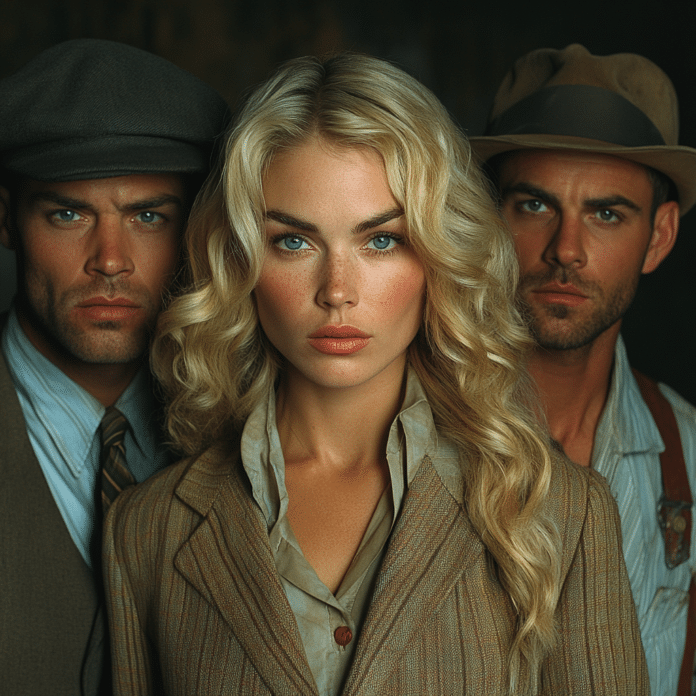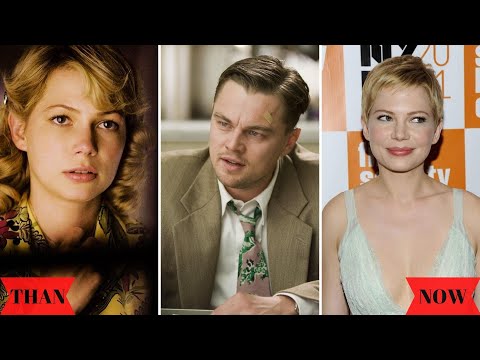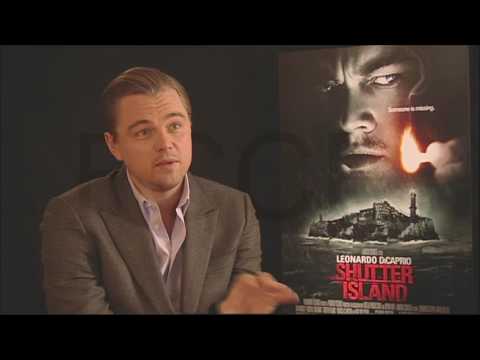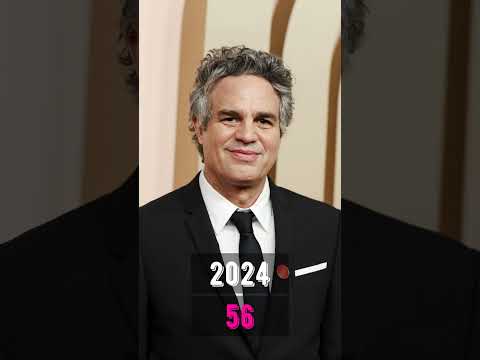The 2010 thriller “Shutter Island,” directed by Martin Scorsese, remains a landmark psychological drama that showcases some of the most gripping performances in cinematic history. The Shutter Island cast, led by the incomparable Leonardo DiCaprio, delivers portrayals that are both haunting and unforgettable. They invite viewers to lose themselves in the complexities of madness, guilt, and redemption. This article will explore the performances of the Shutter Island cast, drawing comparisons with various acclaimed ensembles, and analyzing the psychological depth they brought to their roles. Grab your popcorn because we’re about to dive deep!
1. Leonardo DiCaprio: A Descent into Madness
As U.S. Marshal Teddy Daniels, Leonardo DiCaprio takes audiences on a harrowing journey through his character’s unraveling mind. The sheer intensity of DiCaprio’s performance is nothing short of mesmerizing. He reflects the turmoil of a man grappling with loss and trauma, mirroring the depths Bryan Cranston plumbed as Walter White in “Breaking Bad.” Like Cranston, who transformed from a meek chemistry teacher into a formidable drug lord, DiCaprio masterfully embodies Teddy’s psychological descent, making it convincing and terrifying.
One remarkable scene features DiCaprio’s confrontation with his own memories, pulling the audience into a whirlwind of emotions that feel all too real. Watching such an emotional unraveling can feel akin to watching a majestic ship sink—fascinating yet horrifying. Just like Breaking Bad kept viewers on the edge of their seats, DiCaprio’s performance ensnares us in the tidal wave of Teddy’s mind.

2. Mark Ruffalo: The Loyal Anchor
Meanwhile, Mark Ruffalo shines as Chuck Aule, Teddy’s steadfast partner, bringing a calm yet intense demeanor that contrasts perfectly with DiCaprio’s turmoil. Ruffalo embodies the loyal anchor of the film, a role reminiscent of the patient and compassionate demeanor displayed by Dick Van Dyke in “Diagnosis Murder.” Both actors portray loyalty amidst chaos, enriching the emotional texture of their narratives.
Ruffalo’s character often serves as the audience’s voice of reason, guiding us through the storm that is Shutter Island. His performance not only supports DiCaprio’s character arc but also adds a layer of intrigue, as you can’t shake the feeling that he’s holding back more secrets than he lets on. Did we mention how perfectly he nails the role of the friend who tries to talk you out of jumping off a cliff? Sometimes you really need that guy!
3. Ben Kingsley: The Unraveling Mind of Dr. Cawley
Then there’s Ben Kingsley as Dr. John Cawley, who is not merely a supporting character but the puppeteer orchestrating the film’s psychological tension. Kingsley brings an enigmatic authority to his performance, which mirrors Lawrence Fishburne’s iconic portrayal of Morpheus in “The Matrix.” Both characters captivate viewers with their understanding of the profound complexities of their success, drawing us deeper into the psychological games at play.
Kingsley’s adept portrayal creates an unsettling duality that keeps us guessing: is he a trusted ally or a cunning adversary? The viewers can’t help but hang on his every word, much like how audiences were entranced by Morpheus expounding on the nature of reality. The mind games in Shutter Island resonate strongly, leaving you questioning not just the characters’ motives, but the very fabric of sanity itself.
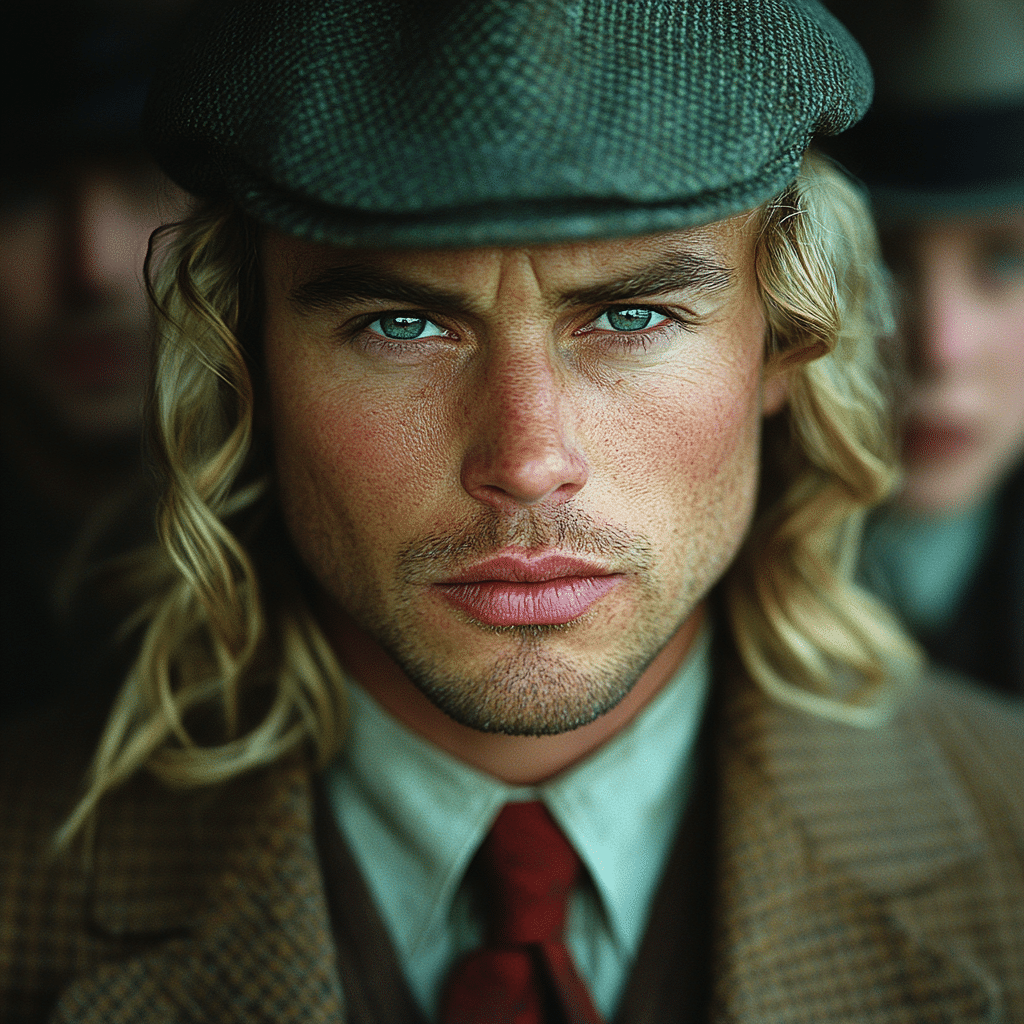
4. Michelle Williams: Echoes of Trauma
Michelle Williams delivers a haunting performance as Teddy’s deceased wife, Dolores, whose presence lingers like a ghost, echoing unresolved trauma. With her ethereal glow and haunting expressions, Williams captures the audience’s empathy in her brief screen time, paralleling Shailene Woodley’s heartfelt performance in “Insurgent,” where she’s also navigating psychological struggles.
It’s intriguing how Williams generates a sense of longing, her character remains a specter throughout the film, and each flashback unfolds new layers of grief for Teddy. Just when you think you’ve figured it out, her performance leaves you spiraling. It’s like encountering a haunting melody that resonates long after the notes have faded. Who knew a limited appearance could pack such emotional weight?
5. Emilie de Ravin: The Silent Scream of the Damned
Emilie de Ravin portrays Rachel Solando, adding a layer of mystique and emotional depth to the Shutter Island cast. Her character is enveloped in layers of mystery and intrigue, reflecting the social dimensions of the human experience. De Ravin’s performance draws parallels to the dynamic tensions within the “Quantum Leap” cast, where each episode introduces characters with compelling backstories that contribute to overarching themes of redemption and identity.
Every time de Ravin graces the screen, it’s as if her character is grappling with her own silent scream, lurking just beneath the surface. You’re left pondering the toll of trauma and the impact it leaves on the psyche. Much like Quantum Leap, the tension builds, encouraging the audience to dig deeper and seek out the truth. You’ll find yourself saying, “Hold your horses, what’s really going on here?”
6. The Ensemble and its Echoes in Cinema
The Shutter Island cast’s synergy is reminiscent of iconic ensembles throughout film history. Think about the thrill in the “Bourne Identity” cast, where everyone contributes to an electrifying narrative of suspense and intrigue. The ensemble in Shutter Island operates on a similar level, where each character enriches the film’s chilling atmosphere, filling it with dread and anticipation.
The acting chemistry places you right there on the island—scared to close your eyes for a moment, lest you miss the next revelation. Just as in the Bourne Identity, every twist and turn has a purpose, culminating in a finale that flips your understanding. It’s a cinematic experience that keeps you glued to your seat, questioning every character’s intentions—because anyone could be the hero or the villain.
7. An Outstanding Legacy: The American Graffiti Connection
Even contrasting genres reveal the importance of ensemble dynamics. The “American Graffiti” cast brilliantly showcases how diverse talent can create a compelling narrative tapestry. Though it may seem miles apart in style and tone, Shutter Island pulls you into a psychological labyrinth, showcasing captivating intensity that resonates deeply.
Just as American Graffiti captured youth and nostalgia, Shutter Island encapsulates the shadows of the human psyche and the struggle between sanity and insanity. The interplay of the Shutter Island cast crafts a haunting narrative that lingers long after the end credits roll, much like that catchy tune from your favorite old movie suddenly playing in your head.
In examining the performances delivered by the Shutter Island cast, it’s evident that their intensity, complexity, and interconnectedness greatly enhance the film. Each actor, from DiCaprio’s psychological journey to Williams’ spectral echoes, adds to the film’s rich tapestry. These portrayals touch on the fragility of the human mind and illuminate the darkness that can lie within. As we move further into 2024, the legacy of Shutter Island resonates, reminding audiences of the brilliance that lies within the art of performance, and leaving us all with questions that linger long after the screen cuts to black.
Exploring the Haunting Performances of the Shutter Island Cast
Behind the Scenes with the Shutter Island Cast
When you think about the captivating performances, you can’t overlook the stellar talent of the Shutter Island cast. Leonardo DiCaprio delivers a powerhouse portrayal of Teddy Daniels, keeping audiences at the edge of their seats. Interestingly, DiCaprio’s dedication to roles has been a hallmark of his career, as seen in the intense transformation he underwent for his role in The Revenant. But he’s not the only one who brought depth to the film. Mark Ruffalo, who plays his partner, Chuck Aule, showcases a captivating chemistry that truly enhances the film’s tense atmosphere. This duo certainly raises the bar for strong lead performances in psychological thrillers.
Eerie Facts About the Cast and Production
On a fun note, did you know that Shutter Island was directed by Martin Scorsese, who consistently collaborates with DiCaprio? It’s their fourth project together, and it definitely has that unmistakable Scorsese flair. Speaking of surprising connections, Shutter Island’s eerie landscapes were filmed in a historic location known for its unsettling vibe, the now-abandoned Danvers State Hospital in Massachusetts. This location adds an authentic layer of depth that aligns perfectly with the film’s haunting themes and the mind-bending script. The setting plays its own character, akin to how Melissa Mcbride draws from her own haunting performances in shows like The Walking Dead to create memorable moments.
Cast Insights and Trivia
The Shutter Island cast also includes notable appearances by Ben Kingsley and Michelle Williams, whose performances are filled with haunting nuance. Interestingly, Kingsley’s character, Dr. John Cawley, has a backstory that resembles some of the chilling narratives seen in real-life criminal psychology. Imagine that eerie coincidence while watching! Moreover, Michelle Williams, in her role as Dolores, brings emotional depth that connects viewers with the protagonist’s tragic backstory. Did you know she was initially considered for an animated series, where she might have lent her voice to a character, akin to the expressive arcs found in Euphoria Anime? It’s thematic connections like these that keep audiences intrigued by the intricacies of each cast member’s journey.
As Shutter Island unfolds, it leaves you pondering long after the credits roll, thanks largely to its exceptional cast. These actors, with their impressive backgrounds and unique approaches, deliver a masterclass in tension and psychological exploration, just like how Jhené Aiko’s daughter might astound audiences with a future performance, continuing the legacy of impactful storytelling in film and beyond. Would you believe the intensity of their performances could lead one to ponder questions around themes that parallel current events, like the complexities of human nature during crises, perhaps even drawing parallels to discourse seen in areas like Hamas Hostages executed? Each actor not only contributes to the film but enriches the overall conversation about what lies within the shadows of our minds.
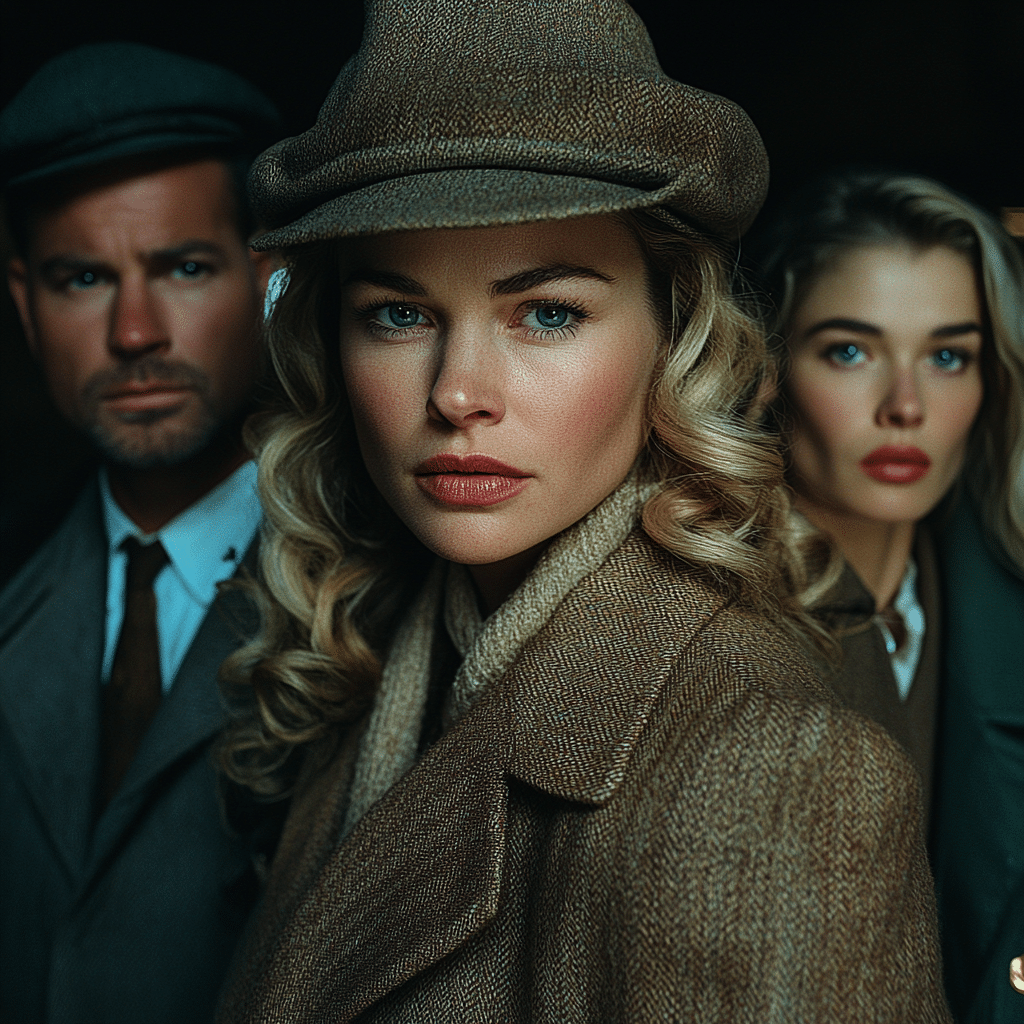
Is Shutter Island based off a true story?
Shutter Island isn’t based on a true story, but it draws some inspiration from real-life locations and histories related to mental institutions, particularly islands like Rainsford and Long Island.
Was he faking it at the end of Shutter Island?
At the end of Shutter Island, it’s pretty clear that Teddy isn’t faking it; instead, he realizes he’s actually Andrew Laeddis and has been lost in a delusion about his identity.
What was the point of Shutter Island?
The main point of Shutter Island revolves around Andrew’s struggle with guilt over killing his wife and trying to escape his past, showcasing how people can slip into delusion as a way to cope.
What is the twist in Shutter Island?
The twist in Shutter Island reveals that Teddy, who’s been searching for a nonexistent killer, is actually Andrew Laeddis, who has been living in a fantasy to avoid facing the truth of his actions.
What is the law of 4 in Shutter Island?
The law of four in Shutter Island refers to the idea that the doctors won’t let dangerous mental patients escape beyond a certain limit, emphasizing how they control the most unstable individuals in the facility.
Who is the monster in Shutter Island?
The monster in Shutter Island is not just the patients but mainly Andrew himself, representing the guilt and conscience he can’t escape from after killing his wife.
Was Andrew still crazy at the end of Shutter Island?
By the end of Shutter Island, Andrew is indeed still grappling with his mental health issues, as he has been trapped in his delusion and the reality of his past.
Was Teddy actually delusional in Shutter Island?
Teddy is delusional throughout Shutter Island, as he creates an alternate identity to avoid confronting the truth about his actions and the trauma he experienced.
Was the lady in the cave in Shutter Island real?
The lady in the cave is a manifestation of Andrew’s mind, representing his guilt about his wife’s death, and she isn’t a real person but a product of his delusion.
Where does Teddy go at the end of Shutter Island?
At the end of Shutter Island, Teddy, now realizing his true identity, seems to retreat into his mind again, which leaves his fate ambiguous as he walks away with the doctors.
Who was right in Shutter Island?
In Shutter Island, it’s a bit gray who’s right; the doctors are trying to handle Andrew’s madness, but the very methods they use raise questions about morality in dealing with patients.
Where did they film Shutter Island?
Shutter Island was filmed on various locations, with Peddocks Island serving as a main backdrop, capturing the eerie atmosphere needed for the story’s intense themes.
What is the moral of the movie Shutter Island?
The moral of Shutter Island is about facing the truth and the painful consequences of one’s actions, suggesting that avoiding one’s past only leads to deeper suffering.
What is lobotomized in Shutter Island?
Lobotomized in Shutter Island refers to a procedure that some patients underwent in the hopes of controlling their behavior, often leading to severe and life-altering side effects.
What is the scariest part of Shutter Island?
The scariest part of Shutter Island is often considered to be the moments when Andrew confronts the darker realities of his mind, diving into themes of loss, guilt, and madness throughout.

